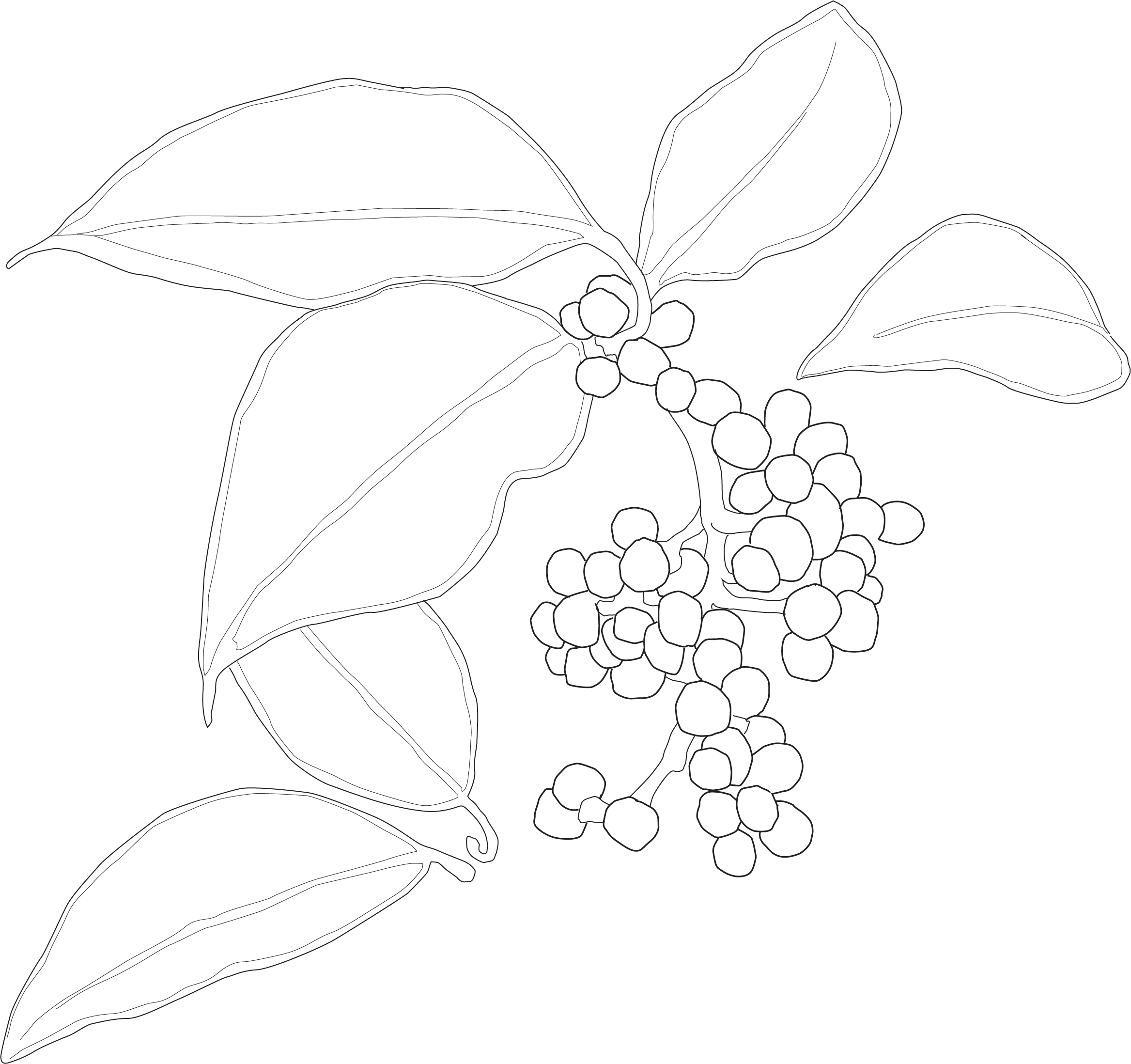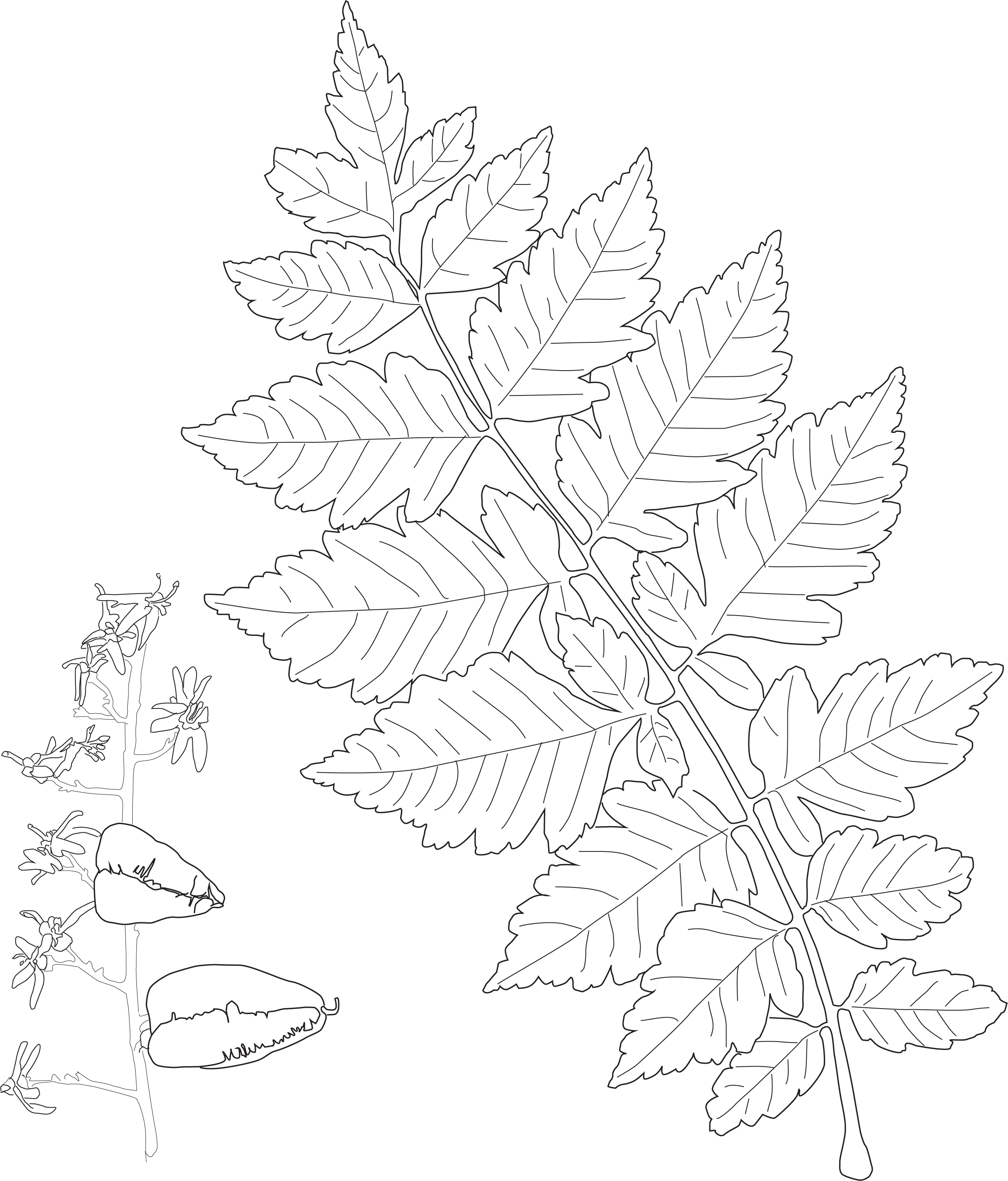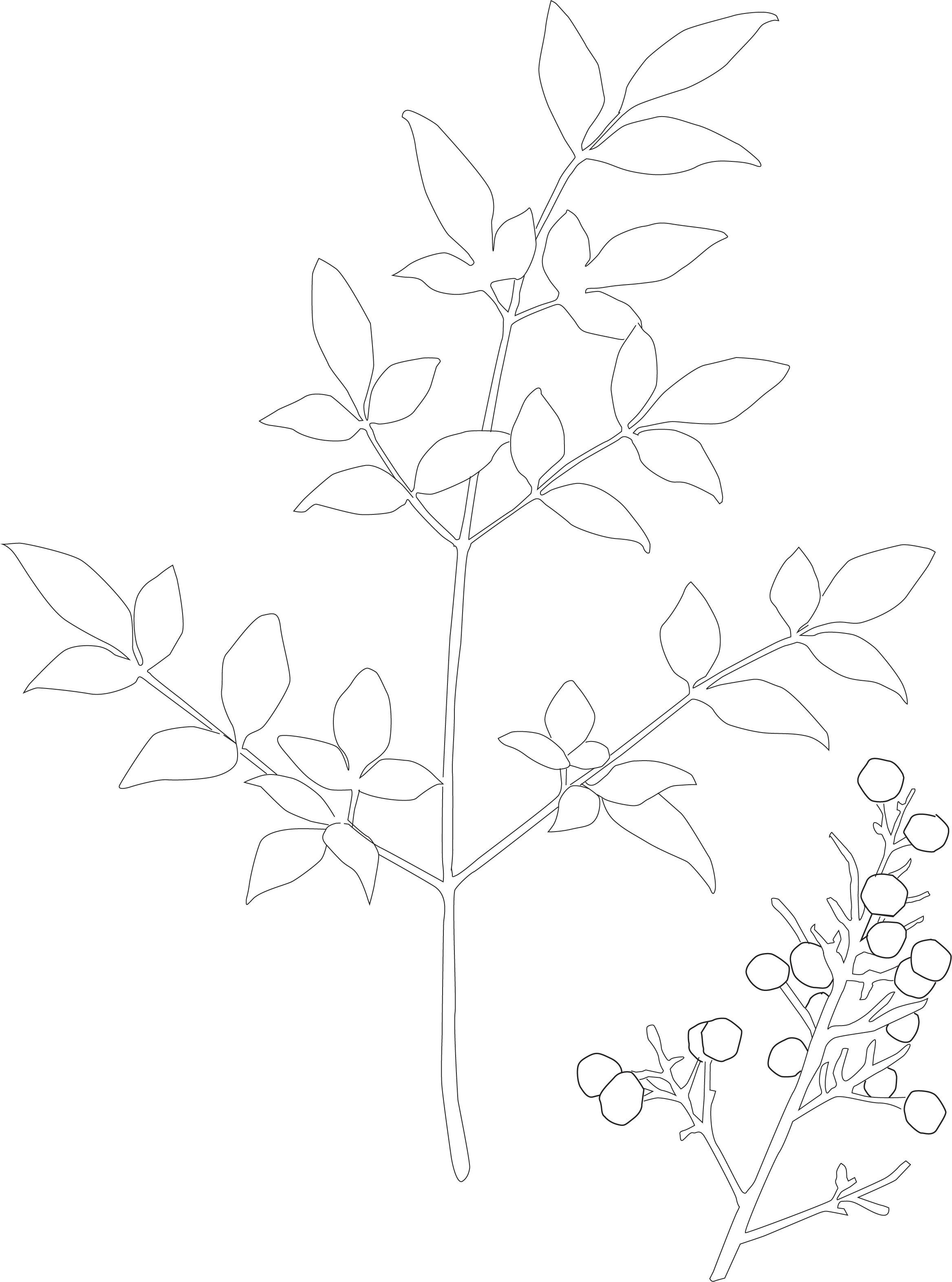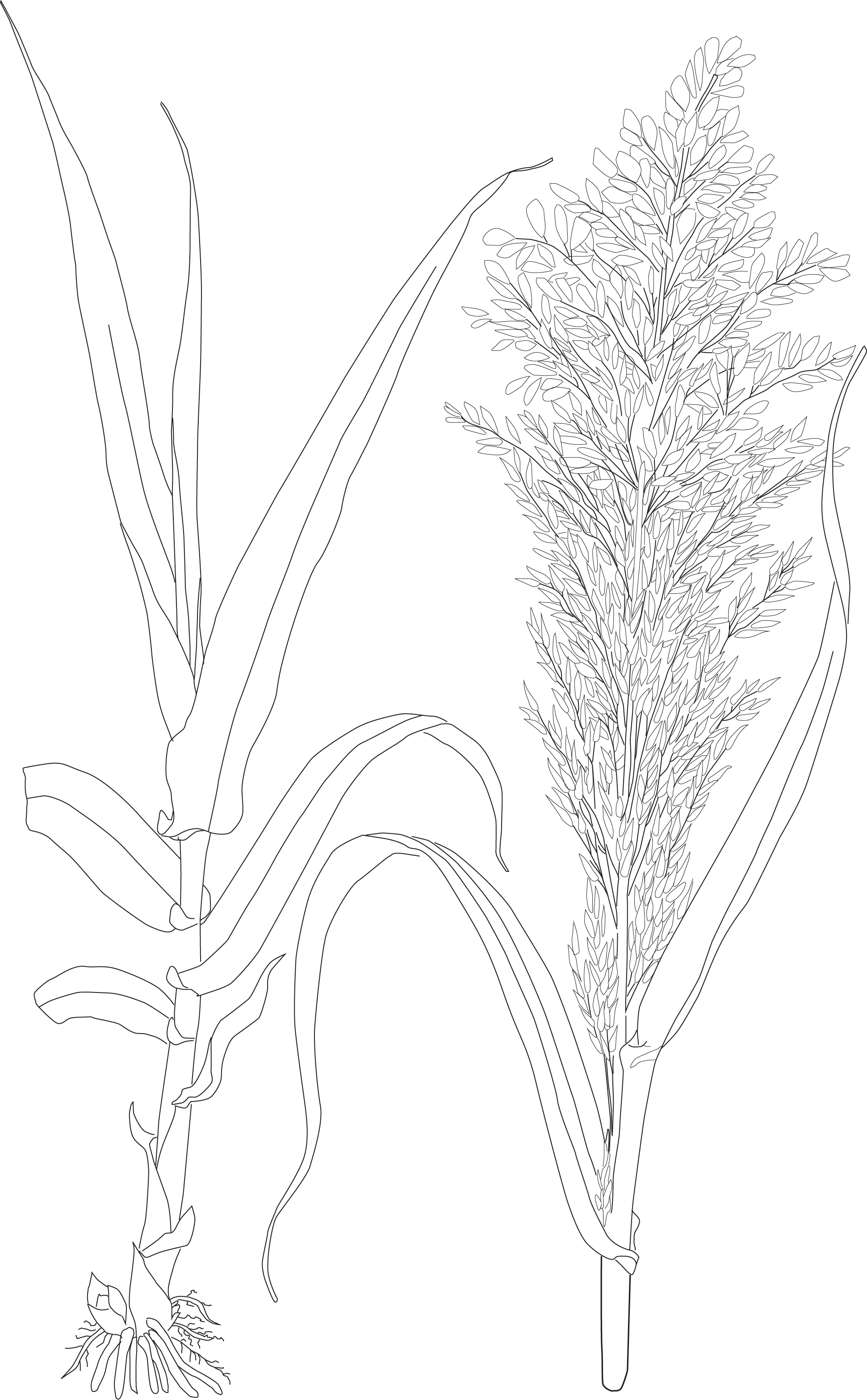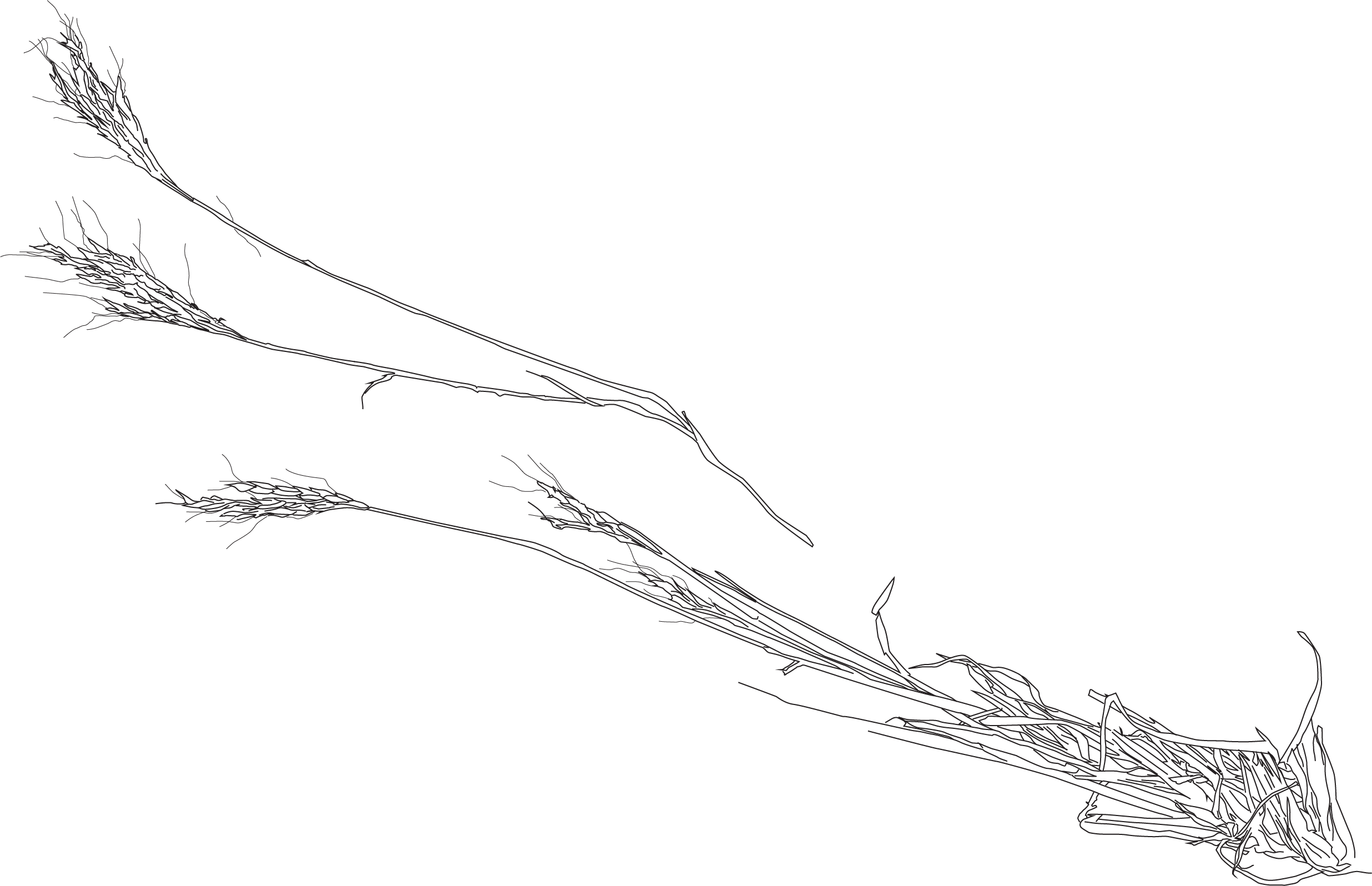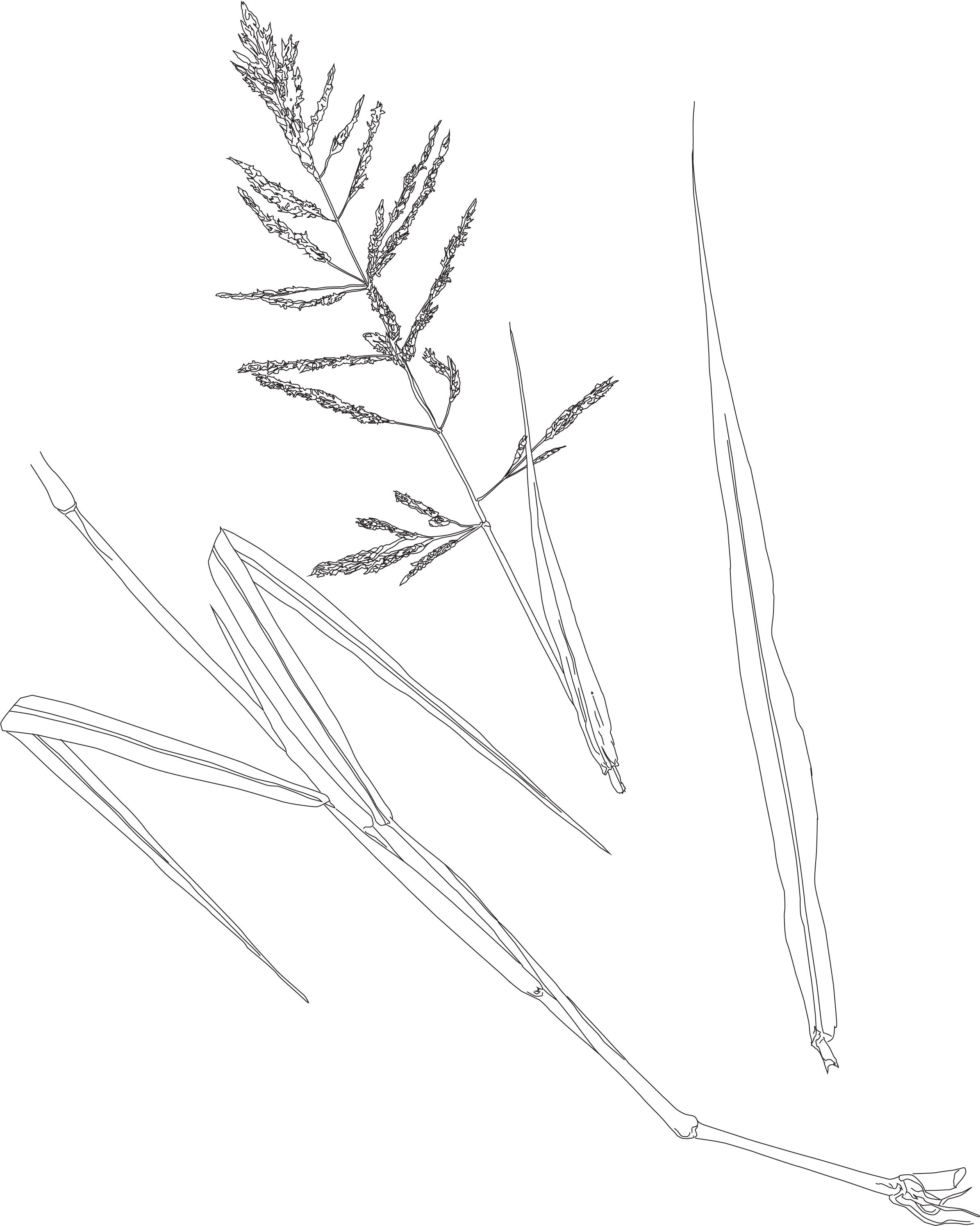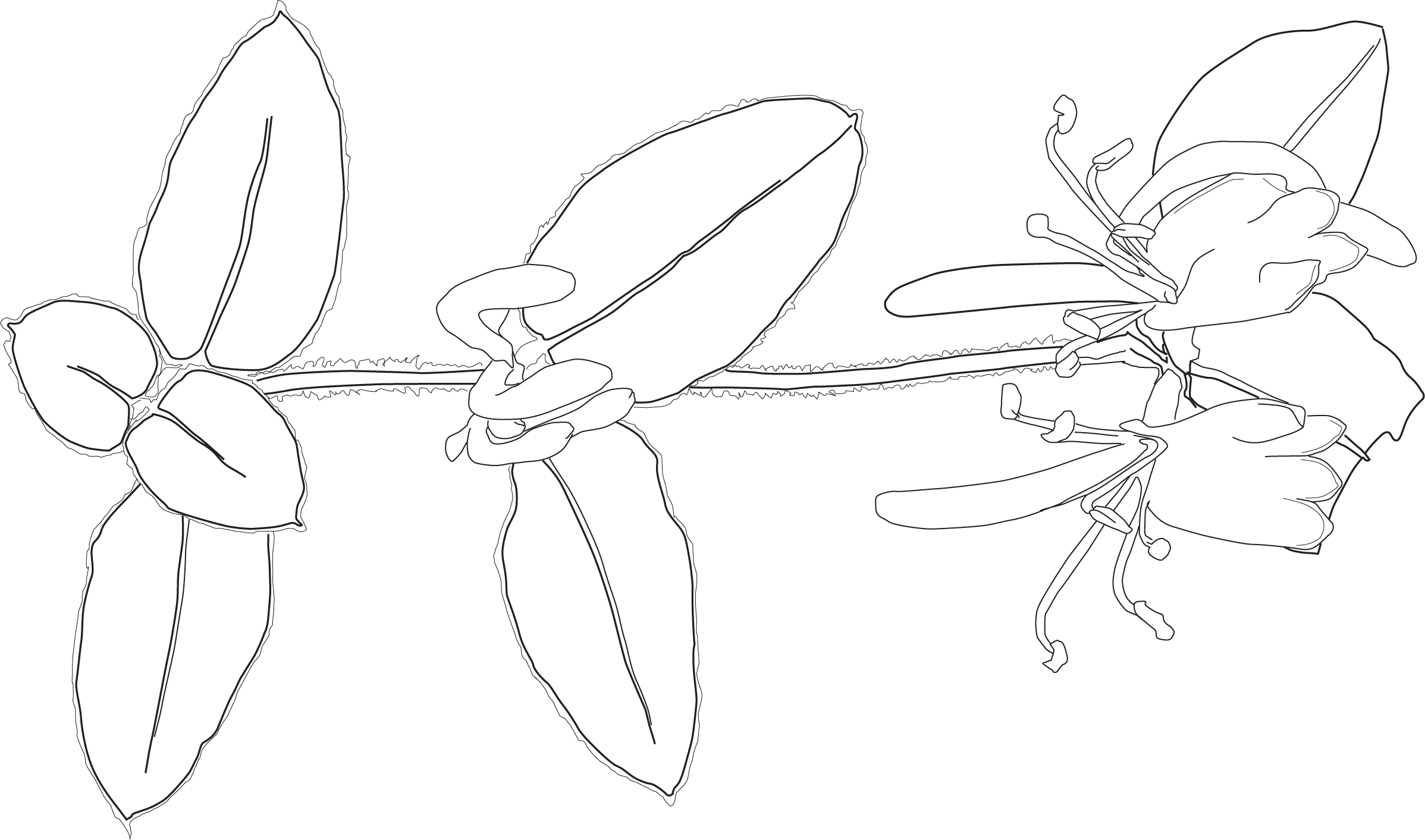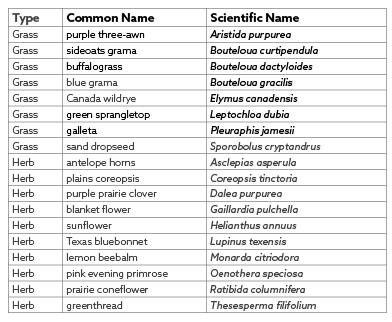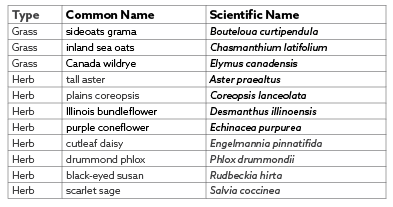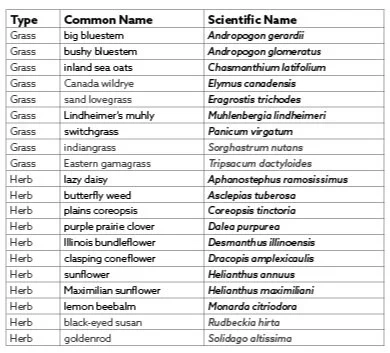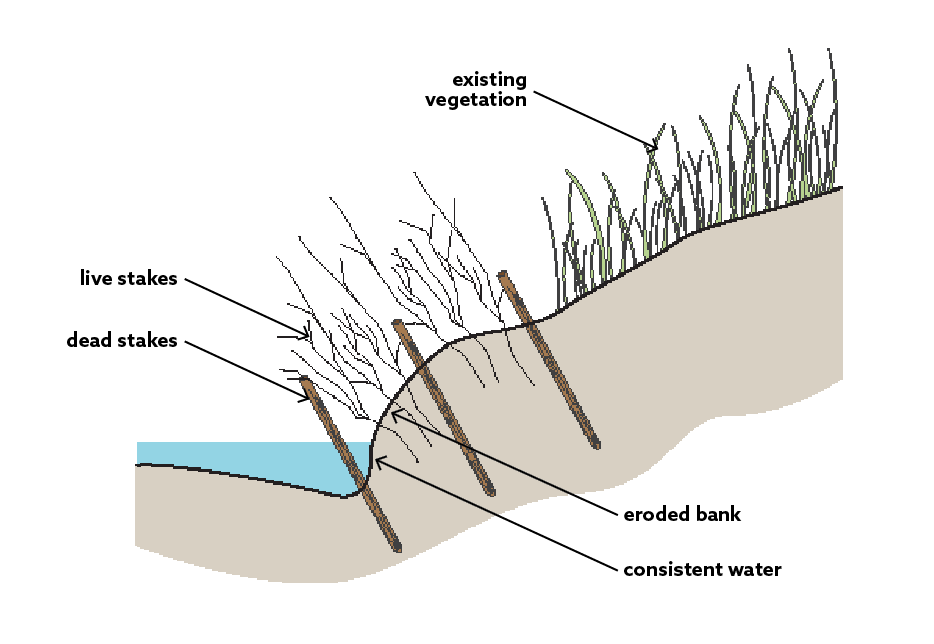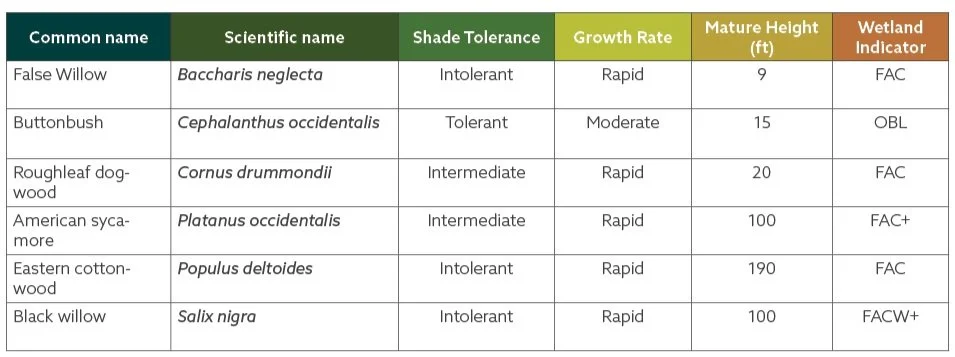Invasive Plant ID
The following invasive plants are some of the most commonly observed species in Central Texas. This guide will help make field identifications.
Glossy Privet
Ligustrum Lucidum
Fast-growing, evergreen tree up to 35’ tall
Glossy, dark green leaves, opposite, simple
Dusty, drooping, dark blue berry clusters
Multiple, tightly-grouped trunks with pale grey bark
Chinaberry
Melia azedarach
Large deciduous tree up to 50’ tall
Smooth reddish bark with white spots when young. Bark is grey and furrowed when mature
Dark green, alternate, bipinnately compound leaves with serrated edges
Clusters of small, lilac flowers, developing into golden, drooping clusters of fruits that persist through the winter
Chinese Pistache
Pistacia chinensis
15-25’ tall with a single-trunked, symmetrical form
Splotchy gray-brown bark, flakes with age
Pinnately compound leaves, usually with an even number of leaflets. Leaves do not have a terminal leaflet.
On female trees, small red to blue berry clusters
Bright yellow and red foliage in fall
Leaves have an unpleasant odor when crushed
Often mistaken for Western soapberry
Chinese Raintree
Koelreuteria paniculata
Bright yellow flowers, followed by papery, pink, lantern-like seed pods
Compound, alternating serrated leaves, medium green color
Bright golden foliage in the fall
Light brown bark, thin plates once mature
Chinese Tallow
Triadica sebifera
25-35’ tall
Simple, glossy leaves with pointed tip
Beige flaky bark
bright yellow and red foliage in fall
Taiwanese Photinia
Photinia serratifolia
10-20’ tall with bushy growth
Simple serrated leaves
Glossy leaves, dark green to burgundy
Smooth and dark reddish-brown to gray bark
Nandina
Nandina domestica
Multi-stemmed, evergreen shrub, 4-8’ tall
Dark green-red pinnately compound leaves
Bright red berry clusters atop of each plant in fall-winter
Thin, long trunk with woody, brown bark, and fissures near the base
Giant Reed
Arundo donax
Tall, perennial cane, up to 20’
Thin, elongated leaves, often 1-2’ long
Very dense and aggressive root rhizome
Large plume of flowers at top of stalk
KR Bluestem
Bothriochloa ischaemum var. songarica
Aggressive, erect bunchgrass 18-48” tall
Stems turn a straw color when mature
“V-shaped pattern” seed head, light green to burgundy
Fine white hairs visible on stem joints
Johnsongrass
Fast-growing, warm-season perennial grass 36-72” tall
Rhizomatic growth, often grows in patches
Long, fibrous leaf blades with thin white stripe through center
Round, cylindrical stem
Noticeable light green to burgundy panicle seed head
Sorghum halepense
Japanese Honeysuckle
Lonicera japonica
Vigorous, spreading vine, 15-30’
Opposite, simple, ovate, dark green leaves.
Soft in texture
New leaves produced in spring are often highly lobed
Small white and yellow flowers spring-fall
Sweet Autumn Clematis
Clematis terniflora
Beautiful but aggressive flowering vine, climbing 15-30’
Small cream-white, 4-petaled blooms in fall
Semievergreen shiny compound leaves with 3-5 elliptic leaflets
INVASIVE PLANT REMOVAL
Invasive species are plants that have been introduced to Texas from other regions around the world. They cause problems by crowding out native species and do not provide the same wildlife habitat value. Removing these invasive species allows for a healthier native plant community and a healthier community of other flora and fauna that depend on relationships with native plants.
PURPOSE
Use sharp or heavy tools responsibly. Weed wrenches may pinch or injure with their weight. Girdling tools are extremely sharp.
Stay aware of fellow workers to avoid hitting them with trees, limbs, or tools.
Use appropriate clothing and protective gear, including long-sleeved shirt and closed-toed shoes, and gloves and glasses.
Supply first-aid, including gauze, tape, super glue, and other materials for lacerations.
Poison ivy is a common understory plant in many areas of the park. Avoid coming in contact with any part of this plant. Wear long sleeves and pants to avoid skin contact.
SAFETY
MATERIALS
Tools needed:
Gloves and eye protection
Weed wrench or Lawn Jaws
Utility knife or linoleum knife
2-3” stiff putty scraper or similar
Coarse plastic scrub pads
Spray bottle with soapy water
70% rubbing alcohol
METHODS: INVASIVE TREES
Includes glossy privet, Chinaberry, Chinese pistache, Taiwanese photinia, golden raintree, and Chinese tallowtree
If focusing on a large area of 75% or greater invasive species cover, it is recommended to remove no more than 1/3 of the invasive trees during one season if using mechanical removal. Girdling is a preferrable method for areas like these.
1.For saplings 2” or less diameter (measured at the base of the trunk), uproot using a Weed Wrench or other mechanical device.
2. Provide for erosion control or restoration plantings as needed.
3. Leave as much of the pulled material as possible on site in low-use woodlands, taking care to remove any seed material, and leaving roots without soil contact.
4. Plan on removing seeds or fruit from the site.
5. Ensure woody material is broken down into shorter lengths and lays flat on the ground surface so that it readily decomposes. Do not leave large piles of brush or logs in natural areas. Reference Trail Brushing sheet for ways to use brush to close informal trails.
MECHANICAL REMOVAL
GIRDLING
1. For trees 2” or greater diameter (measured at the base of the trunk), remove the outer layer of bark.
2. With cutting tool, score the bark around the circumference of the trunk twice, 4-6” apart, at 1/16-1/8” depth.
3. With a flat-edged scraping tool, remove the outer layer of bark from the tree, which should separate from the wood relatively easily.
4. With coarse plastic scrub pad and soapy water, roughly scrape away the toothpick-like remainder of the bark until smooth.
5. Repeat with 70% rubbing alcohol.
GIRDLING EXAMPLE
NOTES
For mechanical removal of Chinese pistache, loosen soil at base of plant to reduce the risk of the trunk snapping at the base.
For girdling of Chinaberry and Chinese pistache, plan to follow up every 3 months to remove or girdle new sprouts from the trunk.
Plan for re-seeding or planting in the areas where significant amounts of invasive plants are removed or soil is disturbed. Reference Restoration Plantings sheet for more information.
For video instructions on girdling ligustrum, refer to “Demonstration of Invasive Tree Girdling with Cliff Tyllick”, available on YouTube:
METHODS: INVASIVE GRASSES
Includes KR bluestem and Johnsongrass
MECHANICAL REMOVAL
1. If the area will be mostly bare following invasive removal, plan for erosion control measures and/or restoration plantings before beginning work.
2. Remove existing plant material including root material from the site.
3. Ensure removal of as much below-ground rhizome material as possible.
4. Remove all plant material and dispose off-site.
5. Install erosion control materials, such as mulch logs, or jute netting if necessary. If replanting, immediately plant after invasive removal. Refer to Restoration Plantings task sheet for more information.
METHODS: INVASIVE VINES AND SHRUBS
Includes nandina, sweet autumn clematis, and Japanese honeysuckle
MECHANICAL REMOVAL
1. For vines 2” or less diameter (measured at the base of the trunk), cut 6-8” above ground level.
2. Uproot using a Weed Wrench or other mechanical device.
3. For nandina, loosen soil around the plant and extract as much of the root mass as possible.
4. Provide for erosion control or restoration plantings as needed.
5. Leave as much of the pulled material as possible on site in low-use woodlands, taking care to remove any seed material, and leaving roots without soil contact. Use pulled material for trail brushing if appropriate (refer to Trail Brushing task sheet).
6. Leave vines in trees and do not attempt to pull them down.
7. Cut vines above 7’ height if they interfere with trail users.
Refer to Invasive Species ID task sheet for descriptions of common invasive species.
Refer to Native Plant ID task sheet for descriptions of common native species, including those that can be mistaken for invasive species.
Plan for re-seeding or planting in the areas where significant amounts of invasive plants are removed or soil is disturbed. Reference Restoration Plantings sheet for more information.
Plan for next year: the process of invasive species removal often creates the conditions for germination of invasive species seeds in the seedbank. Hand pulling of new sprouts is required for multiple years until the seed bed is diminished and other plants can fill the niches.
Plan to remove materials: the removal of invasive species can generate significant amounts of brush. Plan on removing seeds, fruit, or rhizomes (depending on species) from the site. Ensure woody material is broken down into shorter lengths and lays flat on the ground surface so that it readily decomposes. Do not leave large piles of brush or logs in natural areas. Reference Trail Brushing sheet for ways to use brush to close informal trails.
Contact City of Austin Watershed Protection Department for guidance on invasive species removal efforts as well as Ready Set Plant events for re-planting of native species following invasive species removal.
Contact City of Austin Urban Forestry Department for removal of mature invasive trees that cannot be removed by volunteers or hand tools.
Contact City of Austin PARD for removal of invasive giant reed (Arundo donax) that cannot be removed by volunteers or hand tools.
NOTES
SITE RESTORATION
POST REMOVAL
After removing invasive species from a site, it is critical to prevent their reintroduction. Various methods and techniques of restoration are used to increase biodiversity, create pollinator habitat, restore soils, increase shade, and improve woodland health.
PURPOSE
Be aware of snakes, scorpions, or fire ants that may be living under rocks or logs.
Use sharp tools responsibly.
Stay aware of fellow workers to avoid hitting them with brush or tools.
Poison ivy is a common understory plant in many areas of the park. Avoid coming in contact with any part of this plant. Wear long sleeves and pants to avoid skin contact.
SAFETY
MATERIALS
Plant material for installation:
container plants or plugs
bare root saplings or shrubs
live root grasses and forbs
seed
Amendments:
single-grind mulch or straw
compost
Tools needed:
gloves
long-sleeved shirts and pants recommended
soap and/or lotion for poison ivy treatment
spade or sharpshooter shovel if planting live plants
rake if seeding
buckets, wheelbarrows, or carts
NATIVE TEXAS SPECIES SUITABLE FOR RESTORATION
Includes species suitable for methods such as seeding, container planting, and live staking.
UPLAND FULL SUN SPECIES
UPLAND SHADE-DAPPLED SPECIES
MODERATE TO HIGH MOISTURE SPECIES
Approved Seed Vendors:
Native American Seed
Douglas King Seed
Turner Seed
For more approved seed mixes, reference Unified Stewardship Plan or City of Austin Standard Specification Manual 609S Native Seeding and Planting for Restoration
RESTORATION
METHODS
NATIVE SEEDING
Seeding can introduce a large number of potential plants and species into an area at low cost. It is most useful in areas where rapid plant establishment is not critical and the goal is an increase in biodiversity and overall ecological function. Seed can be procured from approved vendors at right, or gathered locally.
PLANTING STEPS:
Identify the seeding area. Prioritize areas of recently-removed invasive species, low plant diversity, low canopy cover, high erosion, or high visibility.
Source seeds, either directly from the site or from approved sources (listed above). Species should be native to the area and suited to the water and light availability. Seed rate should range from 20-40 lbs per acre, dependent on species, for areas of thin vegetation.
Establish clear boundaries with fences, rocks, logs, or brush that are durable and deter foot traffic. Plan for erosion and utilize logs, brush, or biodegradable straw logs to retain soil.
Most seeding should occur from October to March to allow plants to establish before the heat of the summer.
Clear the seeding area of leaf litter and duff layer to expose the soil. Lightly disturb the soil if it is soft, or actively break up the top 3-6” of soil if it is compacted. Retain all leaf litter and duff layer on site and replace following seeding.
Do not remove existing native plants. Leave native plants in place and seed around them.
Plan for maintenance. Long-term success requires that the new plants have sufficient water, are not being outcompeted by invasive species, and are not impacted by erosion issues.
CONTAINER PLANTINGS
Planting can introduce smaller numbers of plants in specific areas, and if planned wisely (considering seasonality, location, species, and potential for irrigation) can have success quicker than seeding. Ensuring the success of live plantings requires a multi-year commitment to keep the young plants watered, weeded, and protected.
PLANTING STEPS:
Identify the planting area. Prioritize areas of recently-removed invasive species, thin vegetation, bare soil, eroded slopes, low plant diversity, or high visibility.
Schedule planting. Most live planting should occur from November to February to allow plants to establish before the heat of the summer.
Source plant material. Species should be native to the area and suited to the water and light conditions. Plants should be the smallest size suitable for the circumstances.
Establish clear boundaries with fences, rocks, logs, brush, or biodegradable straw logs (also called mulch socks or straw wattles) that are durable and deter foot traffic.
Do not remove native plants.
Arrange plants, considering their mature size and assume 50-75% survival.
Ensure holes for planting are twice as wide as the plant’s container and the plant is planted to full depth, flush with the soil surface.
Plant plants and fill hole with excavated soil. Ensure soil around the plant is firm and without voids.
Water plants immediately after planting.
Container plantings should be mulched with a 3” layer of wood mulch. Take care to not bury container plants with mulch. This may be sourced locally from PARD or arborists, and should be free of trash and invasive species.
Plan for maintenance. Long-term success requires that the new plants have sufficient water, are not being outcompeted by invasive species, and are not impacted by erosion issues.
LIVE STAKING
Live staking is the method of planting dormant branches of certain species so that they sprout roots and become new shrubs or trees. It is a method limited to areas of high moisture, such as eroded streambanks, but can be very successful at re-establishing vegetation when performed correctly. Because the stakes are gathered locally from fast-growing species like back willow, it is possible to plant large quantities at low cost.
PLANTING STEPS:
Identify an area of creek bank with consistent moisture, low canopy cover, high erosion, or high visibility. The outside of a curve will receive higher floodwater velocities, but is also in greater need of staking.
Source stakes by pruning existing willows on-site. Use stakes of roughly ½-1” diameter and 3-8’ length.
Embed stake 12-18” in the creek bank, using a sharpshooter shovel if needed. Embed stakes 1-3’ apart from one another.
Consider floodwaters and how to secure large stones or utilize them for protection of new plants.
Optional: use dead stakes to protect live stakes or secure large stones. Dead stakes should be straight and free of branches. Ligustrum is recommended.
Species appropriate for live stakes:
Black willow (Salix nigra)
Buttonbush (Cephalanthus occidentalis)
Roosevelt weed (Baccharis neglecta)
Cottonwood (Populus deltoides)
Roughleaf dogwood (Cornus drummondii)
American sycamore (Platanus occidentalis)

